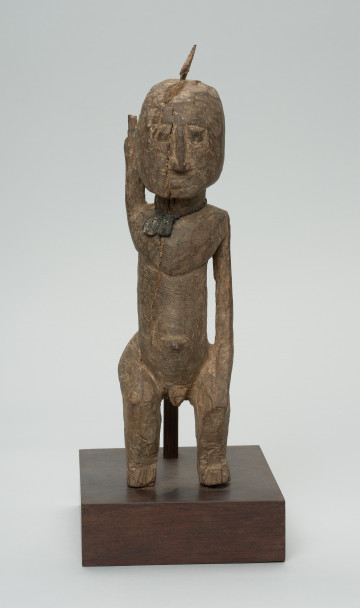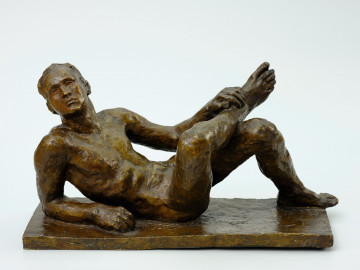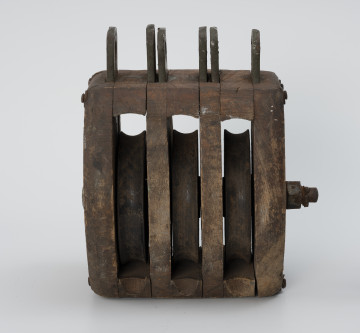
Figure - ancestor
między 1951 — 2000
National Museum in Szczecin
Part of the collection: European classics of modernity
Maria Gorełówna began her artistic education in 1920 in Zofia Trzcińska-Kamińska's studio in Warsaw, and between 1924 and 1925 she perfected her technique in Anton Hanak's atelier in Vienna. After returning to the capital, she enrolled in the local School of Fine Arts, where under the tutelage of Tadeusz Breyer she assimilated the classicising style of the so-called Warsaw School of Sculpture. While in her late period ceramics was one of her favourite media (the multi-figural altar of the Heart of Jesus in the Saint Roch Church in Janów near Chorzele, 1958), and she tried her hand at working with stone and concrete, Gorełówna's first choice was wood. This material, which inspired the interwar Cracow community to folk Podhale stylisations, was used by Trzcińska-Kamińska with panache, bravura and monumentalism, in which critics sought effects typical of the Baroque. Her expressivity evokes the impression of a string stretched to the last detail, wrote Stanisław Woźnicki about Gorełówna's master (Od malowniczości do liniaryzmu [From Picturesque to Linearism], Południe 1924, no. 1, p. 11). The theoretician began his reflections with a quotation from Emile Antoine Bourdelle's statement: [...] only by persistently penetrating the essence of things, by copying what is most visible, touchable, measurable in them, are we able to express their spirit. Trzcińska-Kamińska's massive, polished wooden statues reflected the light on the bulging muscles, while the grain seemed to imitate the tendons of tense bodies. The sculptures by Hanak, whose supernaturally sized male nudes used the formal language of Bourdelle to commemorate the First World War dead, were similarly expressive. The statuette of Gorełówna from the Szczecin collection, made of a precisely worked black oak trunk, adapts Bourdelle's motif of Łucznik Herkulesa [Hercules the Archer] (1909) where the human silhouette becomes a taut bow, turning the observation of the physical laws of nature into a sublime allegory of work.
Szymon Piotr Kubiak
Author / creator
Dimensions
cały obiekt: height: 65 cm, width: 37 cm
Object type
sculpture
Creation time / dating
Creation / finding place
Identification number
Location / status

między 1951 — 2000
National Museum in Szczecin

1935
National Museum in Szczecin

1901 — 1950
National Museum in Szczecin
DISCOVER this TOPIC
National Museum in Lublin
DISCOVER this PATH
Educational path